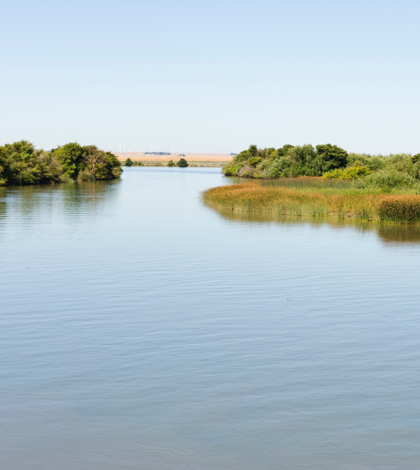The U.S. Bureau of Reclamation recently announced the issuance of the final Coleman National Fish Hatchery (CNFH) Adaptive Management Plan (AMP) in conjunction with the U.S. Fish and Wildlife Service (Service), NOAA Fisheries, the California Department of Fish and Wildlife (CDFW) and Pacific Gas and Electric Company (PG&E).
Located along the Battle Creek tributary of the Sacramento River, the CNFH has served as an important mitigation component of the federal Central Valley Project, partially compensating for lost natural salmonid production resulting from construction of Shasta and Keswick dams.
The Coleman National Fish Hatchery Adaptive Management Plan has been developed to acknowledge, identify, study, and evaluate the impacts of operating a large-scale fish hatchery in a watershed being restored for natural salmonid populations through the Battle Creek Salmon and Steelhead Restoration Project (Restoration Project). The AMP seeks to provide solutions and processes to support optimization of CNFH programs, operations, and infrastructure so that the hatchery mitigation goals and objectives are achieved, while maximizing its compatibility with the Restoration Project. The CNFH AMP was produced through a collaborative effort over a four-year period and included key stakeholders Battle Creek Watershed Conservancy and the Golden Gate Salmon Association.
Established in 1942, the annually propagates three salmonid stocks: fall Chinook salmon, late-fall Chinook salmon and Central Valley steelhead. Restoration of the Battle Creek watershed upstream of the CNFH focuses on providing fish access to historical habitat and the necessary instream flows to benefit naturally occurring salmonid populations.
The CNFH AMP intends to closely coordinate with the Restoration Project AMP, so that together the two adaptive management plans form a single integrated framework for long-term adaptive management in Battle Creek. This integrated process is formalized in the Memorandum of Understanding (MOU) Regarding Integrated Adaptive Management of the Restoration Project and CNFH, signed by Reclamation, the Service, NOAA Fisheries, CDFW, and PG&E. This MOU is included in the CNFH AMP.
The Restoration Project is a collaborative effort between Reclamation, the Service, NOAA Fisheries, CDFW, PG&E, various resource agencies and local stakeholders to restore approximately 48 miles of habitat in Battle Creek and its tributaries for threatened and endangered Chinook salmon and Central Valley steelhead, while maintaining clean and renewable energy production at the PG&E Battle Creek Hydroelectric Project. Construction of the Restoration Project is currently on-going with the completion anticipated in 2021.
Information regarding the CNFH AMP is available at http://www.usbr.gov/mp/battlecreek/cnfh.html. Information regarding the Restoration Project is available at http://www.usbr.gov/mp/battlecreek. The final CNFH AMP is available at http://www.usbr.gov/mp/battlecreek/docs/cnfh-amp-final-nov2016.pdf. If you encounter problems accessing the document online, please call 916-978-5100 (TTY 800-877-8339) or email mppublicaffairs@usbr.gov. Copies of the document are also available at the Tehama County Library, 645 Madison Street, Red Bluff, CA 96080.
 California Water News Daily Your Source For Water News in California
California Water News Daily Your Source For Water News in California


